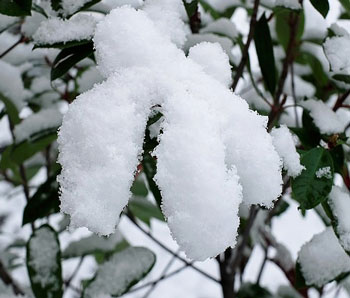Arkansas Garden Blog
Contact
Randy Forst
Extension Educator - Consumer Horticulture
Phone: (501) 671-2245
Email: rforst@uada.edu
University of Arkansas System
Division of Agriculture
Cooperative Extension Service
2301 S. University Ave.
Little Rock, AR 72204
Plant Protection for Freezing Temperatures
by Randy Forst
Jack Frost is nipping at our noses!
At what point should plants be protected from frost?

First of all, it depends upon the plant. Different plants freeze and die at different temperatures. This is why it is important to do some research when picking plants for your landscape.
Plants are given hardiness ratings. Specific plants produce certain hormones that provide frost protection. These plants have a lower hardiness rating (meaning they can survive colder temperatures). That being said, certain plants may lose their foliage during a freeze. This plant has the genetics built in to regrow from the stems. In some cases, if you lose the leaves and stems, the plant will rejuvenate from the roots.
How do I protect my plants during a freeze?
With a light freeze, covering the plants with a sheet or blanket will suffice. You can find frost blankets online that offer winter protection for vegetables and ornamentals. This blanket or sheet will trap the warm air from the ground during a short cold snap. It helps keep the warm air from the ground around the plant. The warmth may be enough to keep a plant from freezing during this short time.
You can use clear plastic, but make sure the plastic is not touching the plant. Be sure to remove the plastic, sheets, and blankets first thing in the morning after an overnight cold snap. If you do not do so, condensation can build up and freeze, plus with clear plastic, heat can build up the next day and scorch the plant.
For additional frost protection, mulch the root zone area with wood chips or straw.
To protect taller plants:
- Drive stakes into the ground around the plant. Make sure the stakes are the same height as the plant.
- Then, take burlap and wrap around the stakes.
- Fill the inside of this barrier with straw or leaves.
This will provide protection for the stems. As soon as the freeze passes, remove the covering.
Don't forget to hydrate your plants before a freeze!
One of the most important things to do before plants experience cold freezing temperatures is to hydrate the plant's roots. Watering the soil will also help the soil retain heat and can help the plant's roots and lower branches survive.